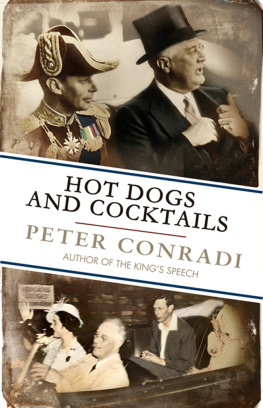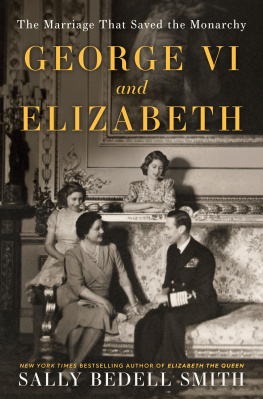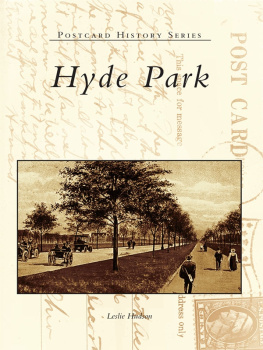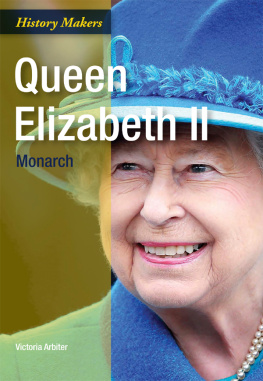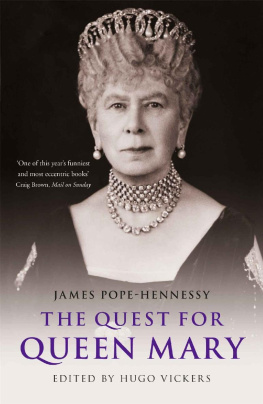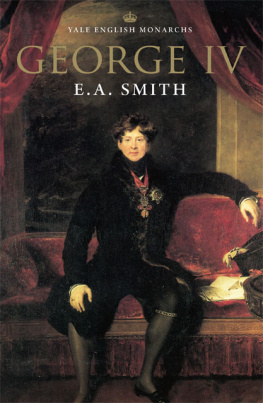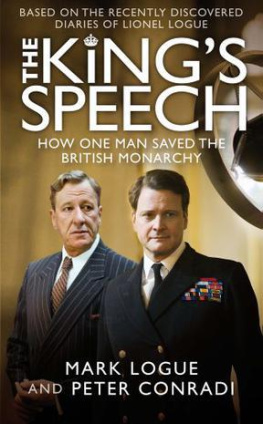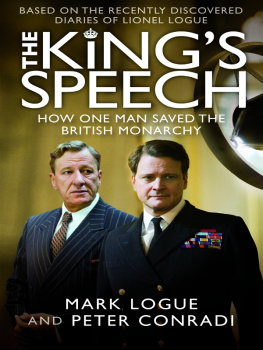HOT DOGS AND COCKTAILS
When FDR Met King George VI
at Hyde Park on Hudson
Peter Conradi

ALMA BOOKS LTD
London House
243253 Lower Mortlake Road
Richmond
Surrey TW9 2LL
United Kingdom
www.almabooks.com
First published by Alma Books Limited in 2013
Copyright Peter Conradi, 2013
Peter Conradi asserts his moral right to be identified as the author of this work in accordance with the Copyright, Designs and Patents Act 1988
Printed in Great Britain by CPI Group (UK) Ltd, Croydon, CRO 4YY
ISBN (HARDBACK): 978-1-84688-294-4
ISBN (EBOOK): 978-1-84688-293-7
All the pictures in this volume are reprinted with permission or presumed to be in the public domain. Every effort has been made to ascertain and acknowledge their copyright status, but should there have been any unwitting oversight on our part, we would be happy to rectify the error in subsequent printings.
All rights reserved. No part of this publication may be reproduced, stored in or introduced into a retrieval system, or transmitted, in any form or by any means (electronic, mechanical, photocopying, recording or otherwise), without the prior written permission of the publisher.
This book is sold subject to the condition that it shall not be resold, lent, hired out or otherwise circulated without the express prior consent of the publisher.
Contents
To J.D.
Hot Dogs and Cocktails

Map of the British royal couples tour of America in June 1939
Introduction
Winston Churchills speech in March 1946 in Fulton, Missouri, is largely remembered for his coining of the term Iron Curtain to describe the fault line that was beginning to emerge in Europe between the capitalist West and communist East, a divide that was to shape the history of the Continent and of the world during the second half of the twentieth century. The speech also contained another phrase that was to have an enduring resonance: Churchill called for a special relationship between the British Commonwealth and Empire and the United States, which should work together at the common task as friends and partners.
At the time Churchill spoke, such a relationship already existed. Indeed, it had been displayed to dramatic effect by the US forces that had just stood alongside their British and Commonwealth counterparts on the battlefields of Europe and beyond as they had done during the First World War. Historians may differ on the moment when the relationship began, but an important stage in its development was undoubtedly represented by a series of meetings between King George VI and Franklin D. Roosevelt at Washington and at the Presidents family seat at Hyde Park in New York State in June 1939, which form the subject of this book.
I touched briefly on this visit in a previous work, The Kings Speech: How One Man Saved the British Monarchy (co-written with Mark Logue), which told the true story of the events depicted in the multi-Oscar winning film of the same name. My inspiration to return to it came from another film, Hyde Park on Hudson, which has at its heart a picnic that Roosevelt, accompanied by his long-suffering wife, Eleanor, and his domineering mother, Sara, held for the King and Queen Elizabeth at Hyde Park during the visit.
The events of that summer day are little remembered today, but at the time the picnic and the bizarre question that loomed over it: would or would not the King eat a hot dog? made headlines on both sides of the Atlantic. Yet the goings-on at Hyde Park were but a small part of a three-week tour of North America that took the royal couple across Canada and back, as well as to New York and Washington.
This was arguably the most important tour in British royal history. For the people of Canada, it was the first time a reigning monarch their monarch had visited their country. The visits importance to Britains ties with America was even greater. It is difficult now, looking back on the close links that have grown up between London and Washington over the past decades, to remember the degree of mutual distrust that still existed between the two countries during the 1930s. The personal relationship between King and President that began at Hyde Park played an important role in turning this distrust into enduring friendship.
In this book, I tell the story of the tour, describing the royal couples progress across North America and the tumultuous and enthusiastic welcome they received at every point, and setting it in the context of Britains relations with the United States and with Canada. I also describe the main characters: the King and Queen and the Roosevelts, of course, but also the principal women in the Presidents life: Margaret Daisy Suckley, Marguerite Missy LeHand and Lucy Mercer.
The bulk of the narrative has come from the many detailed contemporary newspaper reports of the journey. Also invaluable were two instant books: Voyage of State by G. Gordon Young, a correspondent for the Reuters news agency who covered the tour, and North America Sees Our King and Queen by Keith V. Gordon. The diaries of William Lyon Mackenzie King, who accompanied the royal couple, provided an insiders view of the visit, including near verbatim accounts of some of his conversations with the King, while Eleanor Roosevelts many writings, together with books by her sons, James and Elliott, gave a wonderful insight into goings-on within the White House that would be unimaginable today.
Among more recent works, Closest Companion, edited and annotated by Geoffrey C. Ward, is a fascinating collection of the diaries of Suckley and of her letters to and from Roosevelt, Franklin and Lucy by Joseph E. Persico is a masterful study of Roosevelts love life, while The Roosevelts and the Royals by Will Swift charts well the relationship between these two royal families.
Chapter 1
Hyde Park on Hudson
No one could remember when they had last flown the Union Jack in Hyde Park, Dutchess County, but the chances were it had been back in colonial times. Now, all those years later, the British flag and the Stars and Stripes were strung in alternate rows between the trees along a short stretch of Main Street. There was a large welcome sign on the approach to the village from the town of Poughkeepsie and smaller ones on several other buildings. The post office, immediately opposite the village garage, strewn with bunting, looked especially festive.
Although home to just eight hundred people, Hyde Park had grown accustomed to its unlikely role as summer capital of the United States. Whenever the opportunity arose, the towns most famous son, Franklin Delano Roosevelt, often known simply as FDR, would slip away from the stresses of Washington DC and pitch up at Springwood, the colonial-style clapboard house set in 1,300 acres of woodland with glorious views of the valley leading down to the Hudson River, which had been in the family for more than seventy years.
Since Roosevelts election as president almost seven years earlier, this was where he had entertained visiting princes, prime ministers and presidents. Like American leaders before and after him, Roosevelt appreciated the usefulness of a place away from the formality of the White House to which he could invite allies or opponents and pursue politics and diplomacy in a beautiful, relaxed setting. He also loved this house and this particular corner of New York State. It was in his blood. All that is within me cries out to go back to my home on the Hudson River, he once declared.

